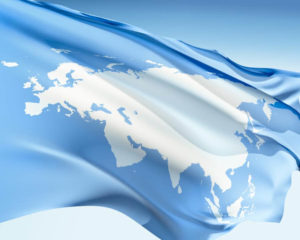Russian Approaches to Integration on the Post-Soviet Space in the 2000s
Palgrave Macmillan, London. Oost-Europa Tijdingen, (5): 2-29.
The issue of (re-)integration of the post-Soviet space emerged exactly when new Russia emerged itself. In the mid-2000s, integration on the post-Soviet space remains the priority and the field of constant concern for the Russian foreign policy. The approaches to the CIS integration are developing over time. There is a mix of continuity in both underlying goals and the means employed to achieve them. This paper intends to come up with the charactistics of the Russian developing integration strategy on the postSoviet space in the 2000s. There is a good deal of terminological confusion in the discourse on Russia’s integration attempts. It demands for the clarification at the very beginning. For the sake of clarity and continuity, the term “Single Economic Space” (SES) is used consistently throughout the paper referring to the on-going process of creation of the Union of the “Big Four” on the post-Soviet space (Belarus, Kazakhstan, Russia, and Ukraine)1 . In the EU-Russian relations, the initially launched idea was that of the Common European Economic Space (CEES). The same term has been used, for example, in the title of the CEES Concept. However, in 2004 the term “Common Economic Space” (CES) asserted itself in the official discourse. Furthermore, another similar sounding term is the CIS, Commonwealth of Independent States. The latter term not only describes certain agreements and institutional structures but also often used to refer to the whole of the post-Soviet space with exception of the three Baltic states. The paper has the following outline. It starts with the description of Russia’s global and regional vectors of integration denoting the priority of integration on the postSoviet space. After introduction of the CIS integration in the 1990s, the paper goes on to its main part. In section 4 and 5, it is argued that the Russian integration politics on the post-Soviet space in the 2000s can be divided into two periods that approximately coincide with the first and the beginning of the second Putin’s terms in power. The first period had shown the gradual move towards greater role of economic considerations based on the desire to defend national economic interests. The beginning of the second Putin’s presidency has demonstrated the re-assertion of the old paradigms. The considerations of the re-assertion of the Russian zone of influence on the post-Soviet space are gaining ground at the expense of the pragmatic spirit of the benefit/cost calculations. It is argued further in section 6 that Russia employs a wide variety of means to push the CIS states toward integration. Section 7 analyses the concept of the multi-speed and multi-level integration. It comes to conclusion that this concept underlies the CIS, EurAsEC and SES integration designs.
